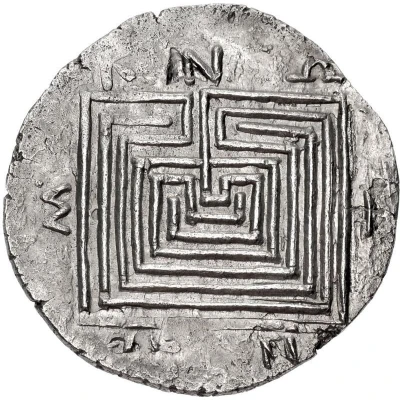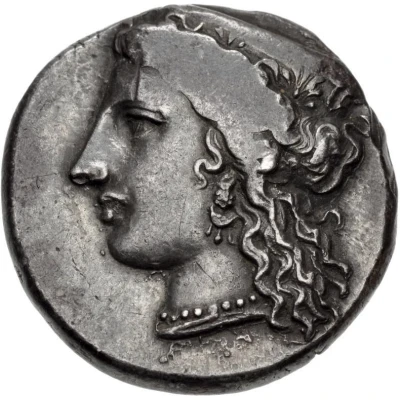


© Classical Numismatic Group, Inc.
Tetradrachm 150 BC - 90 BC
| Silver | 15.67 g | 32 mm |
| Issuer | Knossos (Crete (ancient)) |
|---|---|
| Type | Standard circulation coin |
| Years | 150 BC - 90 BC |
| Value | Tetradrachm (4) |
| Currency | Drachm |
| Composition | Silver |
| Weight | 15.67 g |
| Diameter | 32 mm |
| Shape | Round (irregular) |
| Technique | Hammered |
| Demonetized | Yes |
| Updated | 2024-10-10 |
| Numista | N#398102 |
|---|---|
| Rarity index | 100% |
Reverse
Labyrinth; KNΩ/Σ-I/ΩN in three lines across field.
Script: Greek
Lettering:
KNΩ
Σ-I
ΩN
Comment
Unpublished, cf. Svoronos, Numismatique 98–101 and 177–8 (for type), struck between Svoronos types 98 and 177.
Interesting fact
The Tetradrachm coin from Knossos, Crete (150 BC - 90 BC) features a unique mythological scene on its obverse side. It depicts the Minotaur, a creature with the body of a man and the head of a bull, surrounded by a wreath of olive leaves. This image was a symbol of the Minoan civilization, which was known for its advanced culture, art, and architecture. The Minotaur was also associated with the famous Labyrinth, a maze-like structure that was said to hold the Minotaur captive. The coin's design serves as a testament to the rich cultural heritage of ancient Crete and the enduring legacy of its mythology.



